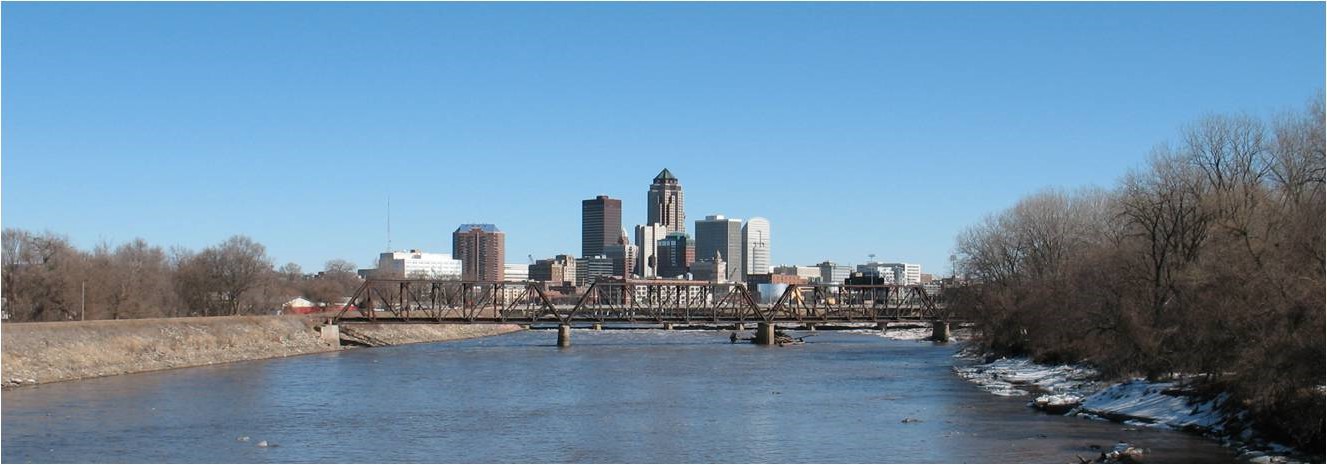Home>Weather and Climate>Sacramento’s Average Temperature: Climate Overview And Trends


Weather and Climate
Sacramento’s Average Temperature: Climate Overview And Trends
Published: March 7, 2024
Discover Sacramento's average temperature, climate overview, and trends. Learn about the weather and climate in Sacramento with our comprehensive guide.
(Many of the links in this article redirect to a specific reviewed product. Your purchase of these products through affiliate links helps to generate commission for Temperatures.com, at no extra cost. Learn more)
Table of Contents
Introduction
Sacramento, the capital city of California, is renowned for its diverse culture, rich history, and vibrant community. Nestled in the heart of the Sacramento Valley, this city experiences a unique climate that significantly influences the daily lives of its residents and the region's ecosystem. Understanding Sacramento's average temperature, climate patterns, and the factors shaping its weather is crucial for comprehending the city's environmental dynamics and the potential impact of climate change.
In this comprehensive overview, we will delve into Sacramento's climate classification, historical average temperature trends, the factors influencing its temperature, the impact of climate change, and future projections. By exploring these aspects, we aim to provide a holistic understanding of Sacramento's average temperature and its implications for the city and its inhabitants. Let's embark on a journey to unravel the fascinating world of Sacramento's climate and temperature trends.
Read more: May Weather Overview – Expectations & Trends
Sacramento's Climate Classification
Sacramento's climate is classified as Mediterranean, characterized by hot, dry summers and mild, wet winters. This classification is attributed to the city's location within the Mediterranean climate zone, which is influenced by its proximity to the Pacific Ocean and the Sierra Nevada mountain range. The Mediterranean climate is renowned for its distinct seasonal variations, with warm to hot, dry summers and cool, wet winters.
During the summer months, Sacramento experiences prolonged periods of sunshine and minimal precipitation, with average temperatures often exceeding 90°F (32°C). The city's proximity to the coast moderates extreme heat, resulting in warm, balmy evenings. In contrast, the winter season brings cooler temperatures and increased rainfall, contributing to the lush greenery that blankets the region during this time.
The Mediterranean climate classification also fosters a diverse ecosystem, supporting a variety of flora and fauna. The region's unique climate has led to the cultivation of vineyards, olive groves, and a rich agricultural landscape, contributing to Sacramento's reputation as the "Farm-to-Fork Capital."
The city's climate classification plays a pivotal role in shaping the local lifestyle, influencing outdoor activities, agricultural practices, and even the architectural design of buildings. Understanding Sacramento's climate classification provides valuable insights into the city's environmental dynamics and the ways in which its inhabitants adapt to and thrive within this distinctive climate.
In summary, Sacramento's Mediterranean climate classification underscores the city's unique weather patterns, seasonal variations, and the diverse ecosystem it supports. This classification serves as a foundation for comprehending the city's climate and its profound impact on the region's culture, economy, and natural environment.
Historical Average Temperature Trends
Over the past century, Sacramento has witnessed notable fluctuations in its average temperature, providing valuable insights into the city's climatic evolution. Historical data reveals compelling trends that shed light on the city's temperature patterns and their implications for the local environment and inhabitants.
During the early 20th century, Sacramento experienced relatively consistent average temperatures, with minor year-to-year variations. However, as the century progressed, a discernible warming trend emerged, coinciding with global shifts in climate patterns. The latter half of the 20th century saw a notable uptick in average temperatures, with a clear trajectory towards warmer conditions.
The impact of this warming trend is evident in the city's seasonal temperature patterns. Summers have become more prolonged and hotter, with an increase in the frequency of heatwaves. Conversely, winters have exhibited milder temperatures, accompanied by reduced instances of frost and freezing conditions. These shifts in seasonal temperatures have implications for various aspects of life in Sacramento, from agricultural practices to energy consumption and public health.
Furthermore, the historical temperature trends underscore the interconnectedness of Sacramento's climate with broader global climate phenomena. The city's temperature fluctuations align with larger-scale climate patterns, emphasizing the intricate relationship between local and global environmental dynamics.
In recent decades, advancements in technology and data collection have facilitated more precise monitoring of Sacramento's temperature trends. This enhanced monitoring has revealed nuanced variations in temperature across different areas of the city, providing valuable insights for urban planning, infrastructure development, and climate resilience initiatives.
As we reflect on Sacramento's historical average temperature trends, it becomes evident that the city's climate is dynamic and responsive to broader climatic shifts. The historical data serves as a vital foundation for understanding the city's current climate dynamics and preparing for potential future changes.
In summary, Sacramento's historical average temperature trends offer a compelling narrative of the city's climatic evolution, highlighting the impact of global climate patterns on local temperature fluctuations. This historical perspective provides valuable context for comprehending the city's current climate dynamics and the potential implications of future temperature trends.
Factors Influencing Sacramento's Average Temperature
Sacramento's average temperature is influenced by a myriad of factors, encompassing geographical, meteorological, and environmental elements that collectively shape the city's climate dynamics. Understanding these influential factors is essential for unraveling the complexities of Sacramento's temperature patterns and their impact on the region. Let's delve into the key elements that contribute to Sacramento's average temperature and the intricate interplay among these factors.
-
Geographical Location: Sacramento's proximity to the Pacific Ocean and the Sierra Nevada mountain range significantly influences its average temperature. The ocean exerts a moderating effect, contributing to milder temperatures and reducing temperature extremes. Conversely, the mountain range influences local wind patterns and precipitation, further shaping the city's climate.
-
Urbanization and Heat Island Effect: The rapid urbanization of Sacramento has led to the emergence of urban heat islands, where densely populated areas experience higher temperatures compared to surrounding rural regions. The proliferation of concrete structures and reduced green spaces exacerbates heat retention, amplifying the city's average temperature.
-
Air Quality and Pollution: Sacramento's average temperature is intricately linked to air quality and pollution levels. Elevated pollution can contribute to atmospheric warming, impacting local temperature patterns and air circulation. Addressing air quality concerns is crucial for mitigating potential temperature impacts and fostering a healthier urban environment.
-
Vegetation and Land Use: The presence of vegetation and land use practices play a pivotal role in shaping Sacramento's average temperature. Urban greening initiatives, such as tree planting and green infrastructure development, can mitigate temperature extremes by providing shade and enhancing natural cooling mechanisms. Additionally, agricultural practices in the surrounding areas influence local microclimates, impacting temperature variations.
-
Climate Change and Greenhouse Gas Emissions: The overarching influence of climate change and greenhouse gas emissions cannot be overlooked when examining Sacramento's average temperature. The city, like many urban centers, is susceptible to the impacts of global climate change, including rising temperatures and altered precipitation patterns. Mitigating greenhouse gas emissions and implementing climate resilience strategies are imperative for addressing potential temperature impacts.
-
Weather Patterns and Atmospheric Circulation: Sacramento's average temperature is intricately linked to regional weather patterns and atmospheric circulation. Variations in wind patterns, cloud cover, and atmospheric pressure systems contribute to temperature fluctuations, influencing both daily and seasonal temperature trends.
By comprehensively examining these influential factors, we gain a deeper understanding of the multifaceted elements that shape Sacramento's average temperature. The interplay among geographical, environmental, and climatic factors underscores the dynamic nature of the city's climate and the need for holistic approaches to address potential temperature impacts. As Sacramento continues to evolve, a nuanced understanding of these factors is essential for fostering climate resilience and sustainable urban development.
In summary, Sacramento's average temperature is influenced by a complex interplay of geographical, environmental, and climatic factors, highlighting the dynamic nature of the city's climate dynamics and the need for comprehensive strategies to address potential temperature impacts.
Impact of Climate Change on Sacramento's Temperature
Climate change poses significant implications for Sacramento's temperature dynamics, exerting a discernible influence on the city's climate patterns and long-term temperature trends. The evolving climate landscape, driven by global environmental shifts, has profound ramifications for Sacramento's average temperature and the associated impacts on the region's ecosystem, economy, and public health.
One of the primary manifestations of climate change in Sacramento is the amplification of temperature extremes. Rising global temperatures contribute to more frequent and intense heatwaves, leading to prolonged periods of high temperatures during the summer months. These heatwaves pose substantial challenges for the city's residents, particularly vulnerable populations, and necessitate proactive measures to mitigate heat-related health risks.
Furthermore, climate change has the potential to alter Sacramento's seasonal temperature patterns, disrupting traditional climatic norms. Winters may become milder, with reduced instances of frost and freezing conditions, impacting agricultural practices and ecological dynamics. Conversely, the prolonged heat of summer can exert stress on water resources and exacerbate energy demands for cooling, underscoring the interconnectedness of climate change with broader societal and environmental systems.
The impact of climate change on Sacramento's temperature extends beyond meteorological shifts, encompassing implications for urban planning, infrastructure resilience, and adaptive strategies. The city's susceptibility to temperature-related challenges underscores the urgency of integrating climate-resilient approaches into urban development, emphasizing green infrastructure, heat mitigation strategies, and sustainable land use practices.
Moreover, the influence of climate change on Sacramento's temperature underscores the imperative of proactive climate action, encompassing mitigation and adaptation efforts. Mitigating greenhouse gas emissions, transitioning to renewable energy sources, and enhancing energy efficiency are pivotal steps in addressing the underlying drivers of climate change and curbing temperature impacts.
Adaptation measures, including heat-resilient urban design, community outreach and education, and early warning systems for extreme heat events, are essential for enhancing Sacramento's climate resilience and safeguarding the well-being of its inhabitants.
In essence, the impact of climate change on Sacramento's temperature is multifaceted, encompassing diverse implications for the city's climate dynamics and the broader societal and environmental fabric. Addressing these impacts necessitates a comprehensive approach, integrating mitigation, adaptation, and community engagement to foster a climate-resilient future for Sacramento and its residents.
Future Projections for Sacramento's Average Temperature
As we peer into the future, projections for Sacramento's average temperature unveil compelling insights into the city's evolving climate dynamics and the potential ramifications of continued global environmental shifts. Climate models and scientific analyses offer valuable foresight into the trajectory of Sacramento's temperature trends, guiding our understanding of the city's climatic resilience and the imperative for proactive measures to address potential temperature impacts.
Projections indicate a discernible trend towards warmer average temperatures in Sacramento, aligning with broader global climate patterns. The city is anticipated to experience an increase in the frequency and intensity of heatwaves, particularly during the summer months, posing challenges for public health, energy demand, and urban heat management. The amplification of temperature extremes underscores the urgency of implementing heat-resilient strategies and community outreach initiatives to safeguard the well-being of Sacramento's residents.
Furthermore, projections suggest alterations in seasonal temperature patterns, with potential implications for the region's agricultural landscape and water resource management. Winters may exhibit milder temperatures, impacting traditional frost patterns and influencing crop cultivation practices. The interplay between temperature shifts and agricultural dynamics underscores the need for adaptive strategies to ensure the resilience of Sacramento's agricultural sector in the face of evolving climate conditions.
Urban planning and infrastructure development are poised to play a pivotal role in mitigating potential temperature impacts, with a focus on integrating green infrastructure, enhancing urban cooling mechanisms, and fostering sustainable land use practices. Proactive measures, such as the implementation of heat-resilient building designs and the expansion of urban green spaces, are essential for curbing the urban heat island effect and promoting climate-resilient urban development.
Addressing future temperature projections also necessitates a concerted effort to mitigate greenhouse gas emissions and advance renewable energy initiatives. By reducing the city's carbon footprint and promoting sustainable energy practices, Sacramento can contribute to global climate mitigation efforts while enhancing its own climate resilience.
In essence, future projections for Sacramento's average temperature underscore the imperative of proactive climate action, emphasizing the integration of climate-resilient strategies into urban development, public health initiatives, and environmental stewardship. By embracing these projections as a call to action, Sacramento can chart a course towards a climate-resilient future, fostering a sustainable and vibrant city for generations to come.
Conclusion
In conclusion, Sacramento's average temperature encapsulates a captivating narrative of climatic evolution, intertwined with the city's cultural tapestry, environmental dynamics, and the profound influence of global climate phenomena. The Mediterranean climate classification, characterized by distinct seasonal variations, underscores the city's unique weather patterns and the diverse ecosystem it sustains. Historical average temperature trends unveil the dynamic nature of Sacramento's climate, reflecting the impact of global climate shifts and the city's responsiveness to broader environmental dynamics.
The multifaceted factors influencing Sacramento's average temperature, ranging from geographical location and urbanization to climate change and atmospheric circulation, underscore the intricate interplay shaping the city's climate dynamics. Understanding these influential elements is pivotal for fostering climate resilience, sustainable urban development, and proactive measures to address potential temperature impacts.
The impact of climate change on Sacramento's temperature is undeniable, manifesting in amplified temperature extremes, altered seasonal patterns, and implications for public health, agriculture, and urban infrastructure. Proactive climate action, encompassing mitigation, adaptation, and community engagement, is imperative for navigating the evolving climate landscape and safeguarding the well-being of Sacramento's residents.
Looking ahead, future projections for Sacramento's average temperature offer valuable foresight into the city's climatic trajectory, emphasizing the urgency of integrating climate-resilient strategies into urban planning, agricultural practices, and energy initiatives. Embracing these projections as a call to action, Sacramento can chart a course towards a climate-resilient future, fostering a sustainable and vibrant city for generations to come.
In essence, Sacramento's average temperature is not merely a meteorological metric but a reflection of the city's resilience, adaptability, and commitment to environmental stewardship. By embracing the complexities of its climate dynamics and proactively addressing potential temperature impacts, Sacramento can emerge as a beacon of sustainable urban living, where climate resilience and community well-being converge in harmony with the natural world.














